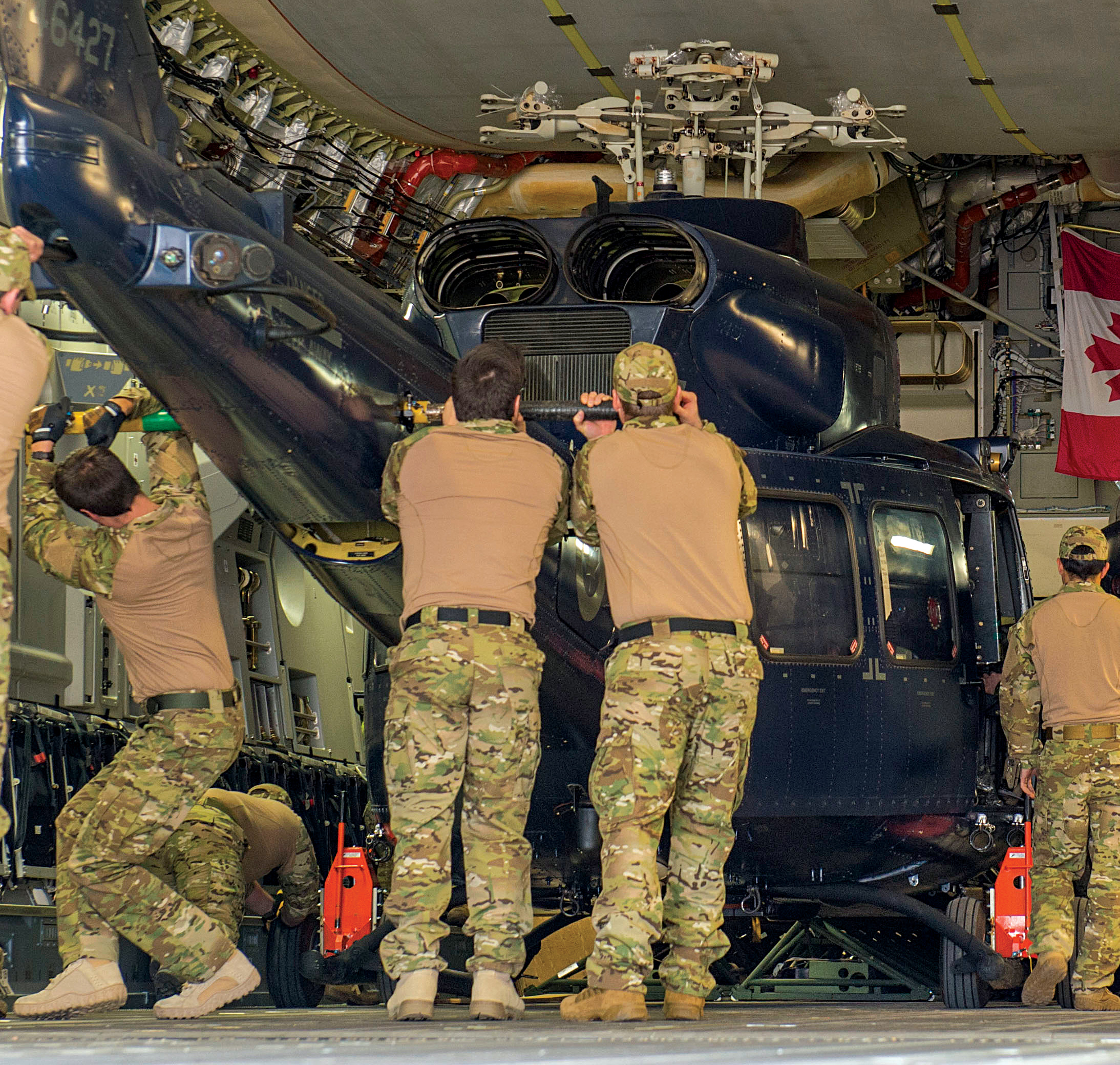
Quick—what is the major reason given for a member of the Canadian Armed Forces not to deploy?
Did you guess musculoskeletal injury? A third of personnel unable to deploy are laid up because they’ve sprained an ankle or have injured their back or knees or have some other MSK (musculoskeletal) complaint.
The CAF reports MSKs are the main medical cause of restricted duties and sick days. But it’s a long-term problem too: between 43 and 66 per cent of medical releases are due to permanent physical limitations from this type of injury, and it is estimated just over half of benefits paid (some $158 million annually) under the New Veterans Charter are for MSK injury.
A U.S. study shows military personnel are much more likely than civilian workers to experience a sprained ankle. One Canadian Forces Base estimated sprained ankles alone cost $1.2 million in lost productivity in merely eight months.
There are weighty demands on the military—loading and unloading heavy cargo from trucks, aircraft and ships, going on patrol with a pack that can weigh 45 kilograms, supporting a heavy helmet while piloting an aircraft. Keeping in shape to be able to do that heavy lifting also takes a toll: sports and physical training account for more than half of these injuries.
Canada isn’t alone—in the past 15 years MSK injuries have spiked for all NATO armies as the tempo of operations has increased. So military researchers around the world are looking for ways to minimize the strain, how to prepare the body so it is up to the task, and the best way to rehabilitate and treat such injuries. Oddly, though grunt work has always been a feature of military service, researchers are still searching for best practices in training to prevent such injuries and how best to treat them. And international comparisons and sharing of information must surely help. For instance, why have 81 per cent of Canadian helicopter crews reported neck pain, compared to less than 60 per cent in the United States, Sweden and the United Kingdom?
When is it safe to return to active duty following an MSK injury? There appear to be differences of opinion. “No concrete criteria currently exist to evaluate readiness for a safe return to duty following an MSK injury,” a research team at the School of Rehabilitation Therapy at Queen’s University in Kingston reported in the Journal of Military, Veteran and Family Health. Its international comparison found that while there is a consistent approach (improving range of motion, stabilizing and immobilizing the injury), how those techniques are applied varied significantly, “even for similar injuries, in the number of interventions used and the duration of intervention.” Comparing the rate at which personnel heal and return to duty is a good start in identifying best practices for treatment and rehabilitation.
A team of researchers from Canadian Forces Health Services Group, Université de Sherbrooke and Université du Québec is exploring how lower back pain is managed in the general population in order to determine effective strategies that could be adopted or improved upon by the Canadian Armed Forces.
Several research teams are looking at redesigning backpacks to relieve shoulder and neck discomfort and to reduce acute and chronic MSK injuries. Research teams are sussing out what level of fitness is required in order to carry a 50-kilogram load in field conditions; another is looking at the best speed to ensure a stable stride while carrying a heavy pack.
Other teams are looking at how to lighten the load for helicopter crews, whose helmets have goggles and a battery pack at the front that add an extra 1.8 kilograms, causing considerable muscle strain to hold the head erect. While a redesign is agreed to be the best solution, a device designed by the research team at the School of Kinesiology and Health Studies at Queen’s University can be attached to the back of the helmet, taking a load off the neck muscles.
And some negative research that’s good news: A team from Canadian Armed Forces and the University of Ottawa found that, unlike the general population, military members do not show elevated levels of common stress hormones and markers for inflammation as they age.
U.S. Army Surgeon General James Peake has described non-battle injuries as “the hidden epidemic” and CAF researchers Major Luc Hébert and Lieutenant-Colonel Peter Rowe have argued addressing the problem is important to operational readiness. And certainly, in leaner times it makes sense to find the best methods of treatment and rehabilitation to return personnel to their jobs as quickly as possible, not to mention addressing the problem before it becomes a permanent disability and leads to a medical discharge.
Advertisement













